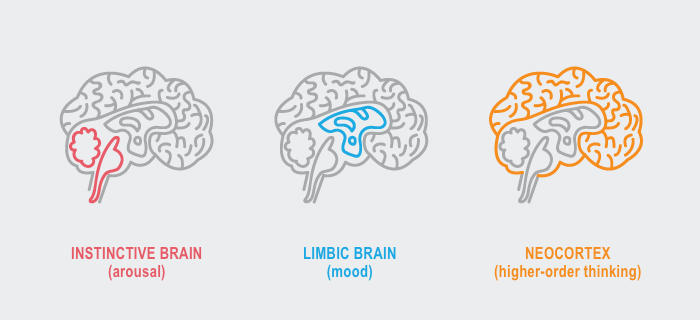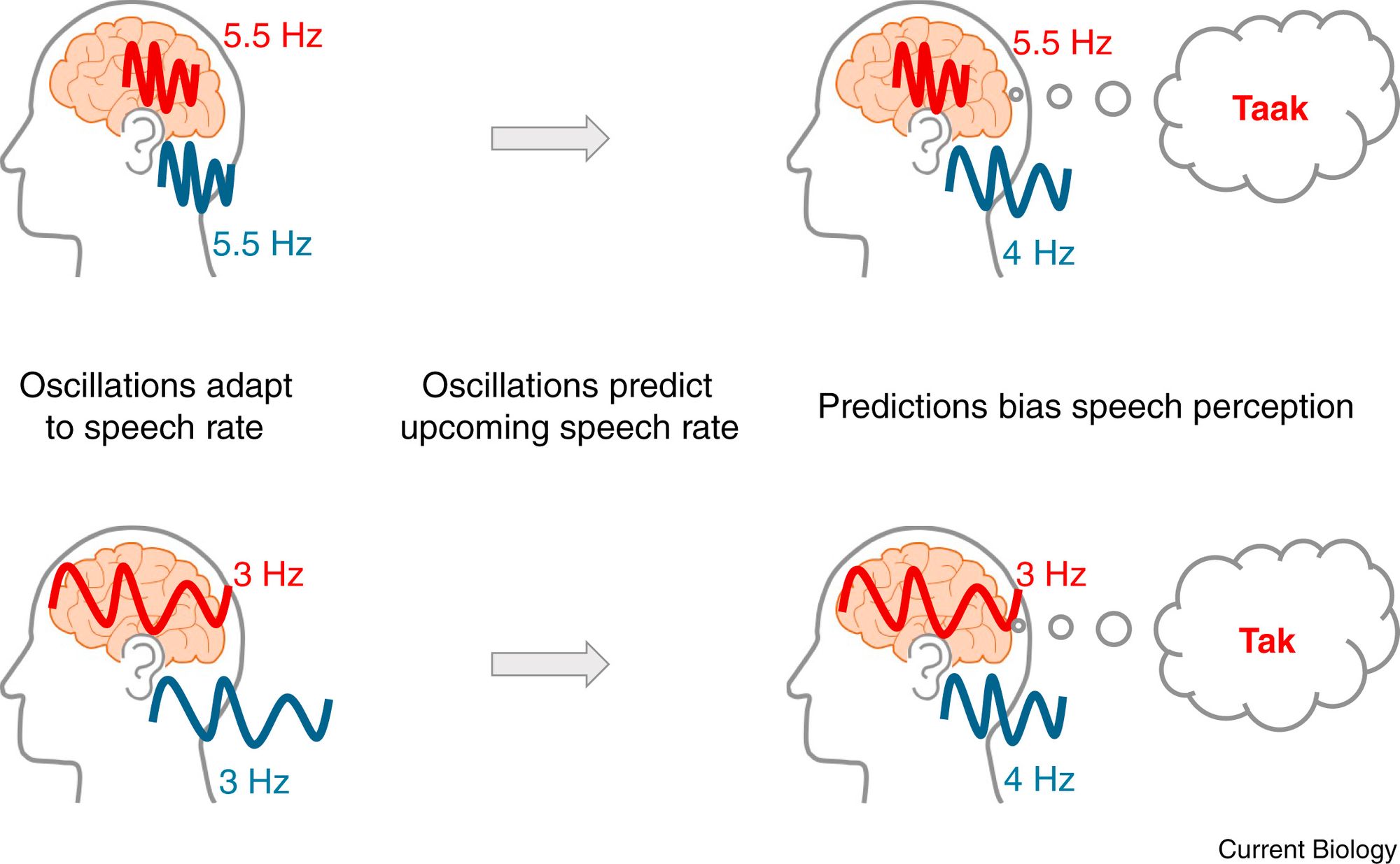Music for Productivity: Brainwaves
What is the deal with YouTube videos claiming to give you 'super intelligence' and apps promising to get you into a flow state?

As we've explored in earlier in this series, music supports cognitive performance by modulating our mood and arousal. But new research suggests that there might be more to the story - that mood and arousal are just one part of the bigger picture.
Music has been around for most of human history and has existed in all ancient cultures. From an evolutionary point of view, it would make sense that music interacts heavily with the oldest, innermost parts of our brain. In the illustration below, you could see that arousal and mood stem from these older brain regions.

But how does music interact with our neocortex? Among other things, it encompasses our sensory systems (e.g., visual, auditory) as well as our executive systems (e.g., paying attention, decision making). It seems absurd to leave the neocortex out of the discussion, but research started only recently started to discover the connections.
We'll also dive into the science behind music products on the market. What is the deal with YouTube videos claiming to give you 'super intelligence' and apps promising to get you into a flow state?
But first, we need some background on the science of brainwaves.
What are brainwaves?
The brain is made up of billions of neurons that communicate with each other via tiny electrical currents. When many nearby neurons activate simultaneously, the small currents add up to produce rhythmic patterns of activity called brainwaves (the popular term for neural oscillations). A good analogy is the wave at sports stadiums, which visually travels through the crowd as groups of fans briefly stand and cheer.
Unlike a stadium crowd, brainwaves carry meaningful information through the brain based on their frequency, or cycles per second (Hz). They allow distant neuronal groups to communicate effectively with each other if they are synchronized at similar frequencies.
By convention, brainwaves are categorized into five frequency bands - delta, theta, alpha, beta, and gamma bands (as pictured below). Each frequency band is loosely associated with a set of cognitive states, such as alertness and relaxation.

As we've covered in the previous article, we effectively have two attentional systems: voluntary and involuntary. Broadly speaking, studies have shown that voluntary control of attention is associated with beta-band synchronization (13 - 32 Hz) between relevant brain regions, whereas involuntary control of attention is related to gamma-band synchrony (32 - 100 Hz).
Despite these associations, it's largely a chicken-and-egg problem. The research isn't definitive on whether these brainwaves simply reflect that our attention is engaged or if they enable us to pay attention in the first place.
Auditory Entrainment
While it's still unclear exactly how these oscillations are naturally generated, their frequency and timing can be influenced by external rhythmic stimuli by a process called neural entrainment.
To give an example, let's look at speech. We don't normally think of speech as a rhythmic stimulus, but it has a steady cadence. Our brain seems to take advantage of this pattern and starts to align our brainwaves to synchronize with the speech frequency. This helps us process the speech because the syllables reach us at the top (or crest) of the brainwave, when the auditory neurons are all activated and primed for processing.
A recent study (pictured below) shows that these entrained brainwaves persist for some time and influence subsequent speech perception. In the experiment, participants listened to Dutch speech at two different rates (3Hz and 5.5Hz), which caused their brainwaves to be entrained at the same frequency. Then, they heard a sentence at an intermediate frequency (4Hz) that ended with a word that has two different meanings depending on the length of the vowel. The authors found that participants with stronger carry-over entrainment from the previous speech rate were more likely to perceive either the longer or shorter vowel ('Taak' or 'Tak').

Beyond just perception, research has suggested that modulating brainwaves through frequency-specific entrainment can causally impact memory retention. In other words, there is some mechanism that might link the entrainment of brainwaves to changes in higher-order cognitive process. This leaves the door open for the possibility that attention could be influenced as well.
So what does this have to do with music?
Similarly to speech, music listening also triggers neural entrainment at frequencies corresponding to the dominant note rate. This leads some to speculate that background music could be used to entrain our brainwaves at certain frequencies that promote sustained attention.
There are several companies that are pushing the boundaries of the science and trying to design music to aid performance. Brain.fm is the clear frontrunner among them, so we'll discuss the technology they developed.
Brain.fm
Brain.fm is a paid service with a library of music purpose-built for focus, meditation, and sleep. You might be thinking, how are they different from the library of music on Spotify?
Instead of curating pre-existing music, Brain.fm creates their own music using a combination of human-made musical content and an algorithmic system. This music is designed with scientific findings in mind and optimized for it's effects on our behavior.
This sounds great on paper, but is it much better than Spotify playlists when it comes to trying to focus? Is it worth the money?
There are two main ways that Brain.fm optimizes their music: brainwave entrainment and reducing attentional capture.
Brainwave Entrainment
As we've explored in the previous article, the beneficial effects of music are mostly attributed to changes in mood and arousal. Very little is known about the influence of mechanisms like brainwave entrainment, which could inform the design of performance-enhancing background music.
In partnership with the MIND Lab at Wesleyan, the Brain.fm team has begun exploring how specific aspects of background music influence sustained attention. They have been focusing on tuning the number of 'notes' per second, or the amplitude modulation rate.
To understand what this means, think of the buzzing sound a helicopter makes:
Brain.fm's music has a similar helicopter-sounding buzz in the background if you listen closely:
In their latest study, participants heard background music that was identical except for the modulation rate (8Hz, 16Hz, 32Hz, and no modulation). They found that, compared to baseline, modulation at 16Hz aided in sustained attention 5 minutes after the onset of music and lasted for about 10 minutes.
The authors speculate that the music entrains brainwaves in the beta band at 16Hz, which promotes voluntary attentional control and results in a performance benefit. This is interesting, but the beta band is also plays a role in sensory and motor systems, so it's not clear what's causing the behavior effect. More broadly, it's not known how exactly neural oscillations and behavior is causally linked.
It's important to understand that these findings are still preliminary and need to be peer-reviewed. That being said, this research is still very exciting! It represents the first steps towards designing music with features that are scientifically proven to support concentration.
Reducing Attentional Capture
To recap the previous article, attentional capture is one of the ways that background music can be distracting. Our involuntary attentional system is triggered by surprising elements of music (e.g. drastic changes in tempo or frequency) and disengages our attention from the task.
The Brain.fm algorithmic system ensures that their music is free of gaps, breaks, or sharp changes that are likely to cause distraction. In particular, you don't encounter many changes between songs on their platform because each track is about 30 minutes long.
While this ensures that we don't get distracted by the music itself, there is a tradeoff here. The surprising elements of music are often what make it enjoyable to listen to in the first place. As a result, the musicians that work with Brain.fm are somewhat constrained - they have to sacrifice the aesthetic of their compositions for better cognitive performance.
Final Verdict
So in the end, is it worth it? How much better is it that picking out your own focus music on Spotify, lets say?
The Brain.fm team is exploring how specific features of music influence cognitive performance through brainwave entrainment. The research is promising but very early-stage, to the point where there is little conclusive evidence that it has significant effects on sustained attention. We could see huge strides in the next few years if the research uncovers exactly how neuronal oscillations influence cognitive performance.
Aside from this research, one advantage is that their music is designed to be free of distracting elements. This is fairly helpful for people that don't have the time or background to choose appropriate background music.
But if you've taken 10 minutes to read the first article in this series (Music and Productivity: The Basics), I'm confident that you can achieve similar results on your own.
That being said, see for yourself! Many people find their platform really helpful. They currently offer five free sessions to check how well their music helps you focus (as well as relax, meditate, and sleep).
Friday Brainstorm Newsletter
For more, join 300+ curious people subscribed to the Friday Brainstorm newsletter. It’s one email a month with the most interesting ideas I've found related to science and health.